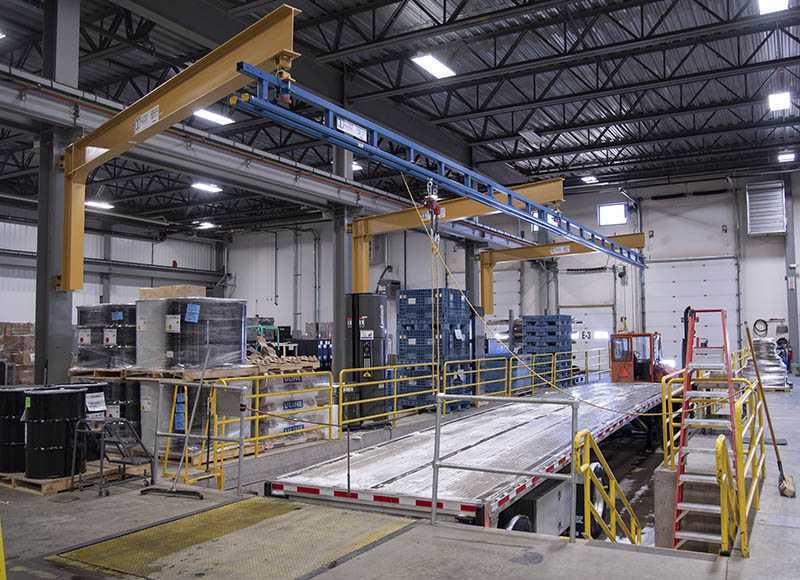Crane safety must be a priority. In 2017, 33 Americans died because of a crane accident. Each of these deaths was preventable.
Manufacturers have integrated safety systems into their cranes. But it’s not enough to rely on technology. You and your workers need to study general crane safety.
What are the risks that each kind of crane poses? What does OSHA have to say about crane operation? What should you to train your employees and allow them to communicate with each other?
Answer these questions and you can prevent a crane accident from ever occurring. Here is your quick guide.
Select the Perfect Cranes
The two main kinds of cranes are fixed cranes and mobile cranes. Each presents its own safety risks.
Fixed cranes do not move from location to location, and they can handle very heavy loads. But their swinging components can strike people and knock over objects. Their loads can become unhinged and fall onto someone.
Overhead cranes count as fixed cranes. The main concern of overhead crane safety is dropping objects onto people.
Mobile cranes travel on the floor, meaning there is less damage if they drop objects. But they can run into someone as they are traveling.
Mobile cranes come in several varieties. Outdoor businesses utilize rough-terrain and all-terrain models.
These cranes have thick rubber wheels to grip the uneven terrain. They can roll over, injuring the operator and anyone outside.
Indoor operations can incorporate crawler cranes. These models use tracks, not rubber wheels. If the tracks wear down, they can affect how the crane travels and cause an accident.
Talk to a crane safety company before you make any purchases. Buy the products they suggest and get their input on how you can operate everything safely.
Review OSHA Guidelines
OSHA Standard 1926.1427 controls crane operation. All operators must have a license or certification to use the technology. The process of receiving a license must involve a knowledge test.
They must receive training that includes formal and practical instruction. They can use cranes if they are being supervised by a trainer. The trainer must remain with the operator-in-training at all times.
The employer must submit the operator-in-training to a test. They can hire a third party that provides operator safety training services to do this.
OSHA also requires retraining. An accident is enough to warrant it.
Keep in mind that OSHA guidelines may change. Google “crane safety OSHA” to follow the most recent developments.
Perform Safety Checks
Before anyone starts using a crane, they should perform pre-start checks.
They should then examine oil levels and the battery life. If they notice a problem, they should fix it without turning the crane on.
Once the pre-start checks are done, the operator can start up the engine. But they should not start moving the crane.
They should check the gauges, looking at the pressure and fuel levels. If the levels are too low, they should shut the equipment down and make adjustments.
For mobile models, the operator should examine the suspension and turn signals. They can drive the crane back and forth to do this. But they should do so outside away from other operators.
The safety systems of all pieces of equipment should be inspected. This should occur on a scheduled basis, with random checks now and again. They should focus on hydraulics and outriggers that keep the crane from tipping.

Talk About Individual Components
Whenever you buy a new crane, you should convene a meeting. Break down its individual components and special features.
Talk in particular about its safety mechanisms and load capacities. Write them down so everyone can read about them. Make it very clear what the maximum weight is.
You should convene a safety meeting every few months or so. You should go over the manufacturer guidelines for all of your cranes.
Touch base on how to rig loads correctly. It is okay to hitch your load onto your crane.
But talk about load radius. The closer the load is to the crane’s center, the more weight the crane can handle. Tell your operators to keep their loads close.
Communicate Coherently
Walkie-talkies allow workers to communicate directly with each other. But it can be hard to hear over your cranes.
This means that hand signals are necessary. You can develop your own code, but it is easier to use already available ones.
Extending an arm and pointing the thumb up means that the operator should raise the boom. Pointing the thumb down means the boom should go down. Pointing an index finger in a certain direction indicates which way the boom should go.
If the crane itself needs to move, an employee should hold a hand out with fingers upward. They should turn in the direction of travel and push their hand back and forth in that way.
To stop the crane, an employee should extend one arm out with their palm facing down. They should then bring their hand toward their chest and extend it out again.
The Essentials of Crane Safety
Crane safety is not hard to understand. Each type of crane presents its own risks. Overhead cranes can drop loads on people, while mobile cranes can strike people as they move.
OSHA requires employers to provide safety training. This includes retraining after an accident.
Each operator should perform safety checks before starting work. You should go over the components of cranes, especially as they relate to load capacity. Develop a system of hand signals among your employees.
Create a culture of safety with help. Shannahan Crane and Hoist serve the St. Louis area. Contact us today.
